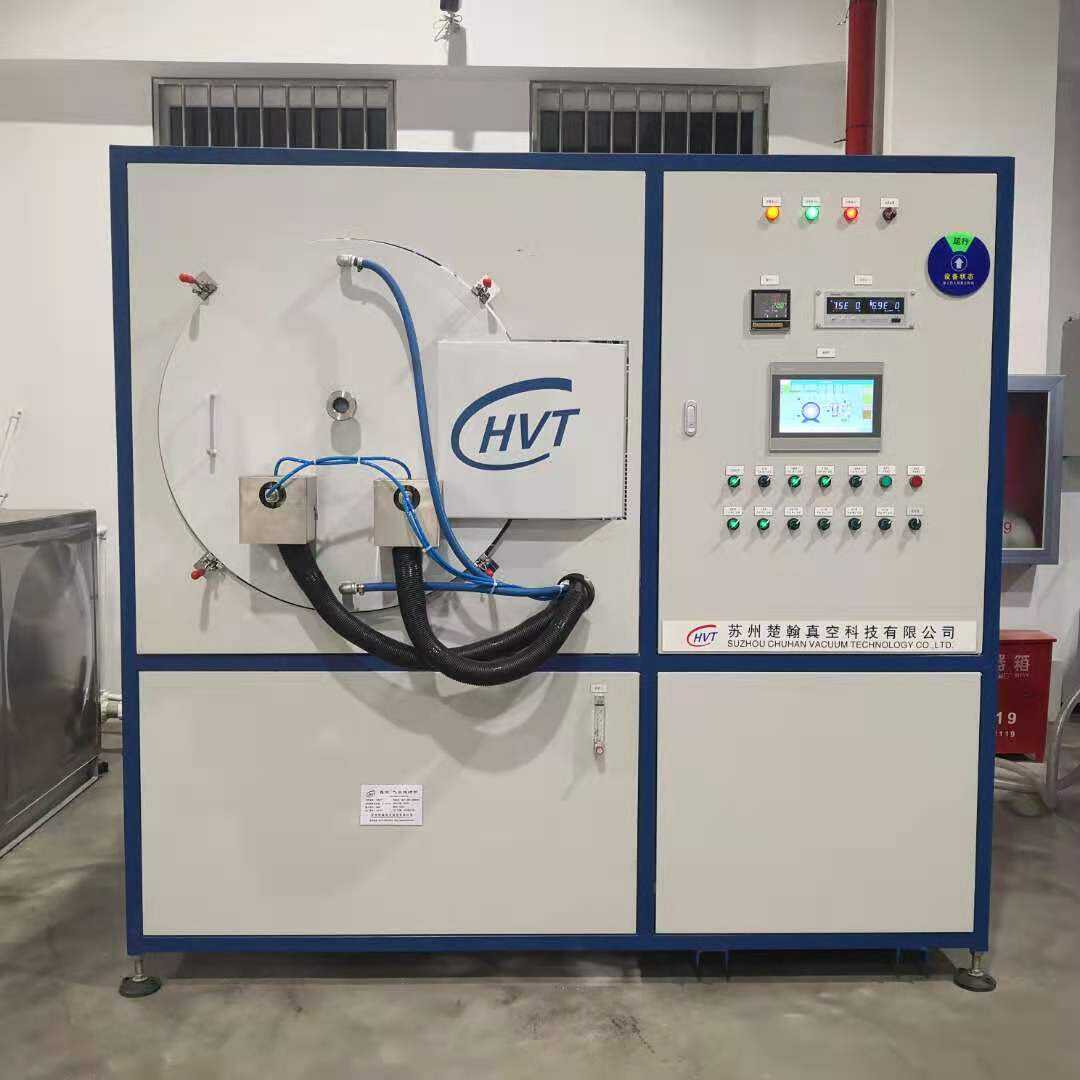Verständnis der revolutionären Auswirkungen der Vakuum-Wärmebehandlungstechnologie
Die industrielle Landschaft der Wärmebehandlung wurde durch die Einführung von Vakuumöfen grundlegend verändert und markiert einen bedeutenden Fortschritt in der metallurgischen Verarbeitung. Diese hochentwickelten Systeme haben die Herangehensweise der Hersteller an thermische Prozesse revolutioniert und bieten bisher unerreichte Kontrolle, Präzision und Effizienz bei Wärmebehandlungsoperationen. Während die Industrie immer höhere Qualitätsstandards und anspruchsvollere Spezifikationen anstrebt, hat sich die Wärmebehandlung in Vakuumöfen als Goldstandard für hervorragende metallurgische Ergebnisse etabliert.
Moderne Fertigung erfordert außergewöhnliche Qualität und Konsistenz bei wärmebehandelten Bauteilen, insbesondere in der Luftfahrt, Automobilindustrie und Medizintechnik. Vakuumöfen leisten dazu einen Beitrag, indem sie ein optimales Umfeld für Wärmebehandlungsprozesse schaffen und viele der Herausforderungen beseitigen, die mit herkömmlichen Atmosphärofen verbunden sind. Die Technologie hinter diesen Systemen ist das Ergebnis von Jahrzehnten ingenieurmäßiger Verbesserungen und Innovationen und führt zu Anlagen, die den strengsten Anforderungen gerecht werden können.
Kernvorteile von Vakuum-Wärmebehandlungssystemen
Überlegene Oberflächenqualität und Reinheit
Eines der überzeugendsten Vorteile der Wärmebehandlung in Vakuumöfen ist die außergewöhnliche Oberflächenqualität der behandelten Materialien. Durch den Betrieb in einem Vakuumumfeld eliminieren diese Systeme Sauerstoff und andere atmosphärische Gase, die während des Erhitzens potenziell mit der Werkstückoberfläche reagieren könnten. Dies führt dazu, dass die behandelten Teile mit makellosen Oberflächen, frei von Oxidation, Entkohlung oder anderen Oberflächenverunreinigungen, aus der Behandlung hervorgehen.
Die saubere Umgebung in Vakuumöfen verhindert zudem die Bildung von Zunder und anderen Oberflächendefekten, die oft eine Nachbehandlung erfordern. Dies verbessert nicht nur die Qualität des Endprodukts, sondern reduziert auch zusätzliche Verarbeitungsschritte und die damit verbundenen Kosten. Für Branchen, in denen die Oberflächengüte entscheidend ist, wie z. B. bei medizinischen Implantaten oder Präzisionskomponenten für die Luft- und Raumfahrt, kann allein dieser Vorteil die Investition in Vakuumtechnologie rechtfertigen.
Präzise Temperaturregelung und -gleichmäßigkeit
Vakuumöfen überzeugen durch eine äußerst präzise Temperaturregelung im gesamten Heizraum. Das Fehlen von Luft oder anderen Gasen eliminiert den konvektiven Wärmetransport, sodass die Strahlung als primärer Wärmetransportmechanismus zum Einsatz kommt. Dies führt zu einer gleichmäßigeren Beheizung aller Bauteile, unabhängig von ihrer Geometrie oder Position innerhalb des Ofens.
Die hochentwickelten Steuerungssysteme moderner Vakuumöfen ermöglichen eine präzise Temperaturregelung, wobei Abweichungen oft auf ±3°F (±1,7°C) oder besser begrenzt sind. Ein solches Maß an Kontrolle ist für Prozesse erforderlich, die eine strikte Einhaltung von Wärmebehandlungsvorschriften erfordern, um einheitliche Materialeigenschaften aller behandelten Komponenten sicherzustellen.
Umwelt- und Betriebsvorteile
Verminderte Umweltbelastung
In einer Zeit zunehmender Umweltbewusstheit hebt sich die Wärmebehandlung in Vakuumöfen durch ihre geringe Umweltbelastung hervor. Diese Systeme funktionieren ohne den Bedarf an Schutzatmosphären oder Löschölen und reduzieren dadurch erheblich die Entstehung schädlicher Emissionen und Abfallprodukte. Der saubere Betrieb von Vakuumöfen stimmt perfekt mit modernen Nachhaltigkeitszielen und gesetzlichen Vorgaben überein.
Die Eliminierung von Atmosphärengasen bedeutet zudem, dass kein ständiger Nachschub an Schutzgasen erforderlich ist, wodurch sowohl die Betriebskosten als auch der ökologische Fußabdruck reduziert werden. Außerdem ermöglicht die präzise Kontrolle über die Prozessparameter weniger Ausschuss und geringeren Materialabfall, was die Umweltverträglichkeit weiter verbessert.
Verbesserte Betriebseffizienz
Wärmebehandlungsprozesse mit Vakuumöfen weisen häufig eine höhere Effizienz auf als konventionelle Methoden. Die hohe Vakuumumgebung erlaubt schnellere Aufheizraten und schnellere Abkühlungsmöglichkeiten, wodurch die gesamten Zykluszeiten reduziert werden. Diese verbesserte Verarbeitungsgeschwindigkeit, kombiniert mit der Fähigkeit, mehrere Chargen gleichmäßig zu bearbeiten, führt zu einem höheren Durchsatz und besserer Ressourcennutzung.
Die automatisierten Steuerungssysteme moderner Vakuumöfen reduzieren zudem den Bedarf an manuellem Eingriff durch den Bediener, wodurch Personalkosten gesenkt und das Risiko von menschlichen Fehlern minimiert wird. Die Fähigkeit, Bearbeitungsbedingungen präzise zu reproduzieren, gewährleistet einheitliche Ergebnisse über mehrere Chargen hinweg und führt so zu verbesserter Qualitätskontrolle und reduzierten Ausschussraten.
Hochentwickelte metallurgische Fähigkeiten
Spezielle Behandlungsoptionen
Die Wärmebehandlungstechnologie von Vakuumöfen ermöglicht spezialisierte Prozesse, die in konventionellen Öfen schwierig oder unmöglich zu erreichen sind. Dazu gehören Hochtemperatursintern, das Löten reaktiver Metalle sowie die Wärmebehandlung empfindlicher Materialien, bei denen äußerst saubere Prozessumgebungen erforderlich sind. Die Vielseitigkeit von Vakuumöfen macht sie für Hersteller, die mit fortschrittlichen Materialien und komplexen Bauteilen arbeiten, unverzichtbar.
Die Fähigkeit, mehrere Operationen in einem einzigen Zyklus – wie Lösungswärmebehandlung, Härten und Anlassen – durchzuführen, ohne die Bauteile zwischen den Schritten der Atmosphäre auszusetzen, bietet einen erheblichen Vorteil hinsichtlich Qualität und Effizienz. Diese Fähigkeit ist insbesondere bei der Bearbeitung hochwertiger Komponenten von großem Wert, bei denen Konsistenz und Qualität oberste Priorität haben.
Eigenschaftsverbesserung von Materialien
Die kontrollierte Umgebung von Vakuumöfen ermöglicht die optimale Entwicklung der Materialeigenschaften. Das Fehlen atmosphärischer Verunreinigungen stellt sicher, dass die beabsichtigten metallurgischen Veränderungen störungsfrei stattfinden, was zu überlegenen mechanischen Eigenschaften führt. Dies ist insbesondere für Hochleistungslegierungen wichtig, die in kritischen Anwendungen eingesetzt werden.
Die präzise Kontrolle über Aufheiz- und Abkühlraten ermöglicht es Herstellern, spezifische Mikrostrukturen und Eigenschaften zu erreichen, die mit konventionellen Öfen nur schwer erzielbar wären. Dieses Maß an Kontrolle ist entscheidend, um den strengen Anforderungen der Luftfahrt, Medizintechnik und anderen anspruchsvollen Anwendungen gerecht zu werden.
Häufig gestellte Fragen
Was macht Vakuumöfen effizienter als traditionelle Wärmebehandlungsverfahren?
Vakuumöfen erreichen eine höhere Effizienz durch überlegene Temperaturregelung, schnellere Aufheizraten und das Vermeiden von Schutzatmosphären. Die Vakuumumgebung verhindert Oxidation und Oberflächenkontamination, reduziert den Nachreinigungsaufwand und führt so zu weniger Ausschuss.
Wie tragen Vakuumöfen zu einer besseren Qualitätskontrolle bei?
Die kontrollierte Umgebung und präzise Temperaturführung in Vakuumöfen gewährleisten einheitliche Prozessbedingungen für alle Bauteile. Dies führt zu homogenen Materialeigenschaften, einer hervorragenden Oberflächenqualität und hochreproduzierbaren Ergebnissen, was eine verbesserte Qualitätskontrolle und geringere Abweichungen zwischen den Chargen ermöglicht.
Sind Vakuumöfen für alle Arten von Wärmebehandlungsprozessen geeignet?
Während Vakuumöfen in vielen Anwendungen hervorragend sind, eignen sie sich besonders gut für hochpräzise Arbeiten, reaktive Metalle und Prozesse, die äußerst saubere Umgebungen erfordern. Sie bieten einzigartige Vorteile für Spezialbehandlungen wie das Löten, Sintern und die Verarbeitung empfindlicher Materialien, obwohl einige Prozesse nach wie vor kostengünstiger in konventionellen Öfen durchgeführt werden können.



